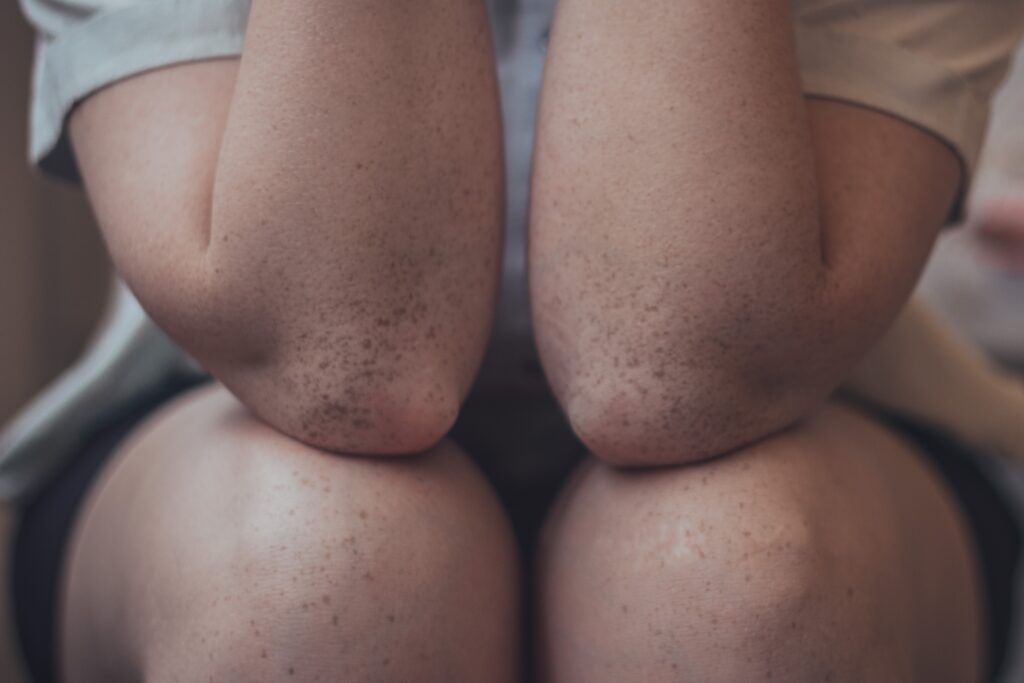Both Osgood Schlatters and Severs disease refer to a growth-plate injury in young people this is the area of the bone where it is still growing. In Osgood Slatters this occurs at the top of the shin bone (tibial tuberosity) where the quadriceps muscle attaches, in Severs this occurs at the back of the heel bone (or calcaneus) where the Achilles tendon attaches.Both injuries are more common in active/sporty young people but may happen to anyone during a period of rapid growth or “growth spurt.”
Osgood Slatters – What is it and how does it feel?
The large muscle on the front of the thigh (quadriceps) attaches to the shin bone via the patella tendon. The function of this tendon is to transmit forces produced by the thigh muscle to the shin to support and move the knee joint. In children, the portion of the shin bone into which the patella tendon inserts is separated from the bulk of the shin bone by a growth plate. This growth plate enables bone growth to occur. However, it also represents a site of weakness in the bone. Forcible and repeated contraction of the thigh muscle can injure the growth plate – this is called Osgood Slatters disease. This commonly occurs in sports which involve running and jumping and occurs during a period of rapid growth. During rapid growth, the thigh muscle and patella tendon become tighter as the bones grow faster than the muscles are able to lengthen and adapt. This leads to increased pulling of the thigh muscle and patella tendon on the shin bone and growth plate.
The painful site is just below the kneecap on the bony bump on the front of the shin, called the tibial tuberosity. Pain is felt most commonly during activity or exercise. The tibial tuberosity may be swollen and often tender to touch.
Severs Disease – What is it and what does it feel like?
Severs disease occurs where the growth plate (or the growing part of the heel) is injured. The foot is one of the first parts of the body to grow to full size, so it grows quite quickly – often faster than the muscles and tendons, this means that the muscles and tendons tend to get tight, so more pressure is exerted by them onto the growth plate of the heel and this repetitive micro-trauma starts to give heel pain and inflammation. This occurs particularly during weight-bearing activities such as running. The person with severs will often complain of pain on walking in the morning or squeezing the heel, they will often limp and have more severe pain after and during exercise.
What can you do for Osgood Schlatters and Severs Disease?
- Limit participation of the aggravating activity. In people playing multiple sports it often means choosing between one or another for a period of time
- Stretching for the tight muscle: Calf (heel over edge of a step and push the heel down) and quadriceps (pull your heel up to your buttock) – hold for at least 30 seconds.
- Ice – wrap crushed ice in a wet cloth and apply to back of heel/ or under knee cap for 10 min
- Take preventative measures: e.g. wear supportive shoes, don’t do too much running on hard surfaces and stretch regularly to maintain flexibility.
How long does it take to settle?
Both Severs and Osgood Slatters are self limiting conditions, which means they will go away on their own when they are used less or when the bones have finished growing. The condition is not expected to cause long term disability, and often will settle within 2-8 weeks. However, while the disease may settle quickly, it may re-occur for example at the start of a new sporting season. Both of these conditions are more common in boys, but they occur in girls as well.
When to seek treatment?
- If the injured person is starting to limp
- If the pain is worsening even with rest
- If the pain has recurred a second time
- If the redness or swelling is not settling down
- If other symptoms are being experienced for example pins and needles, numbness, sharp/searing pain, night pain (while sleeping)
What will the physiotherapist do?
Your physiotherapist can perform a thorough examination of the injury and ascertain if it is in-fact a growth plate injury and can show you how to perform the necessary stretches and strengthening exercises if required, also the physio may make foot wear recommendations or apply taping or bracing to off-load the inflamed area. Your physio can also help you with education and management strategies. The physio will also be able to refer to for x-rays if it is warranted.








